An architectural tour of downtown highlights a well-preserved collection of historic buildings
By Jodi Helmer
Not long after John Lynch established a ferry service across the James River in 1757, Lynchburg transformed into a bustling port city complete with tobacco warehouses, tanneries, blacksmiths, grocers, druggists, churches and homes.
Although most of the original structures are gone, Lynchburg saved many historic buildings from the wrecking ball, preserving the past while giving them new life.
In honor of National Historic Preservation Month in May, take a walking tour of some of the most iconic buildings in downtown LYH.
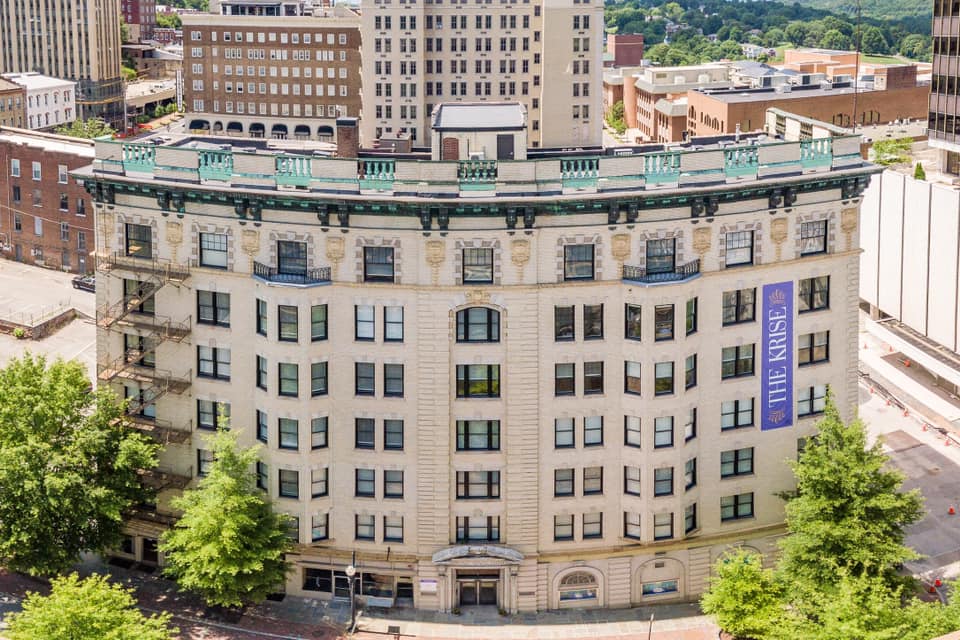
Photo from The Krise Luxury Lofts
Krise Building: Built in 1905, the historic building on the corner of Ninth and Main streets was considered the city’s first skyscraper—a big deal for a building that is just seven stories tall.
The original building, which housed a bank and offices and boasted “modern” amenities like mail chutes and electric hydraulic elevators, underwent a $12 million renovation. Bowen Jewelers, a longtime tenant of the Krise Building, remains on the main level and the upper floors were transformed into 21 luxury lofts; the first tenants moved in last August. From the top floor, the building offers views of Monument Terrace and the James River.
The Virginian Hotel: When the Virginian Hotel was built in 1913, construction costs topped $250,000. The Beaux Arts-style hotel with its grand marble staircase, arched windows, decorative colonnades, and a 30-foot barrel ceiling in the lobby was worth the investment. It was described as “European and modern” and attracted many esteemed guests, including Eleanor Roosevelt and Ronald Regan.
The iconic property fell into disrepair but a 2015 renovation restored the 115-room luxury hotel to its former glory. The Virginian Lynchburg is now part of the Curio Collection by Hilton and a member of Historic Hotels of America.
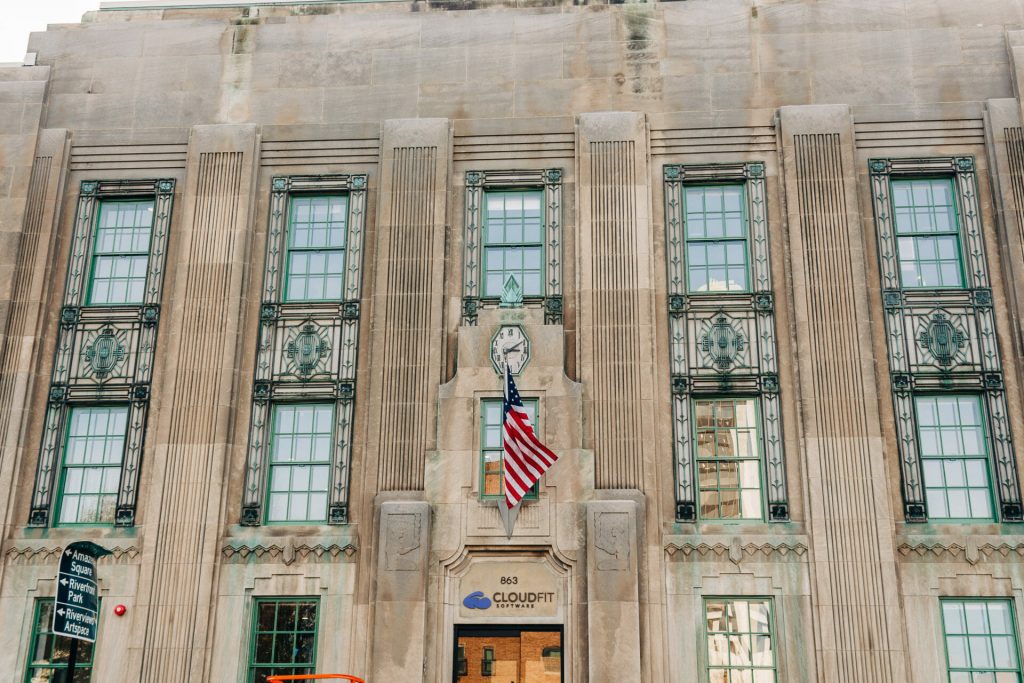
The Carter Glass Building now hosts CloudFit Software Company
Carter Glass Building: Located at 857 Church Street, the Art Deco building was named for Carter Glass, a former U.S. Secretary of the Treasury who helped create the Federal Reserve.
Architect Robert McClanahan Allen designed the building; it was constructed in 1931 and served as the longtime home of two local newspapers, The News and The Daily Advance, but it was vacated in 2007 and sat empty for more than a decade. A renovation transformed the building into a commercial space that is now occupied by CloudFit Software, a cloud-based computing company serving the Department of Defense and companies around the world..
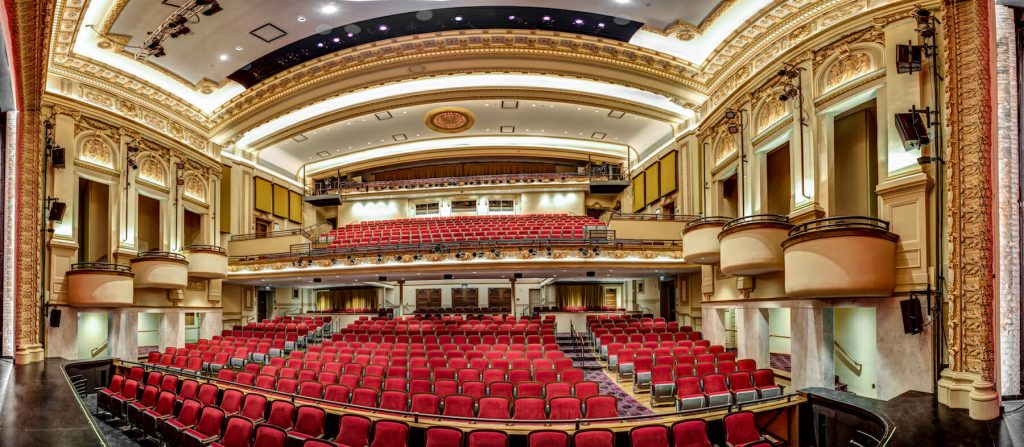
The Academy Center of the Arts Historic Theatre
Academy Center of the Arts: Legendary artists ranging from Will Rogers and Mary Pickford to the Ziegfeld Follies took to the stage and performed for packed audiences in the historic Academy Theater. The theater opened in 1905. Fire ravaged the theater in 1911, closing it for months while it was rebuilt but it opened again with an even more ornate design than the original, delighting theatergoers. It remained a popular spot for live entertainment for decades but later transitioned to a popular movie theater before it closed in 1958.
After sitting vacant for decades, the Academy Theater, one of the few Beaux-Arts style theaters remaining in Virginia, was restored and reopened in 2018 as the Academy Center for the Arts, an arts and cultural center that stages live performances hosts art exhibits, and promotes arts education. Visitors can book private tours for a behind-the-scenes look at the historic building.
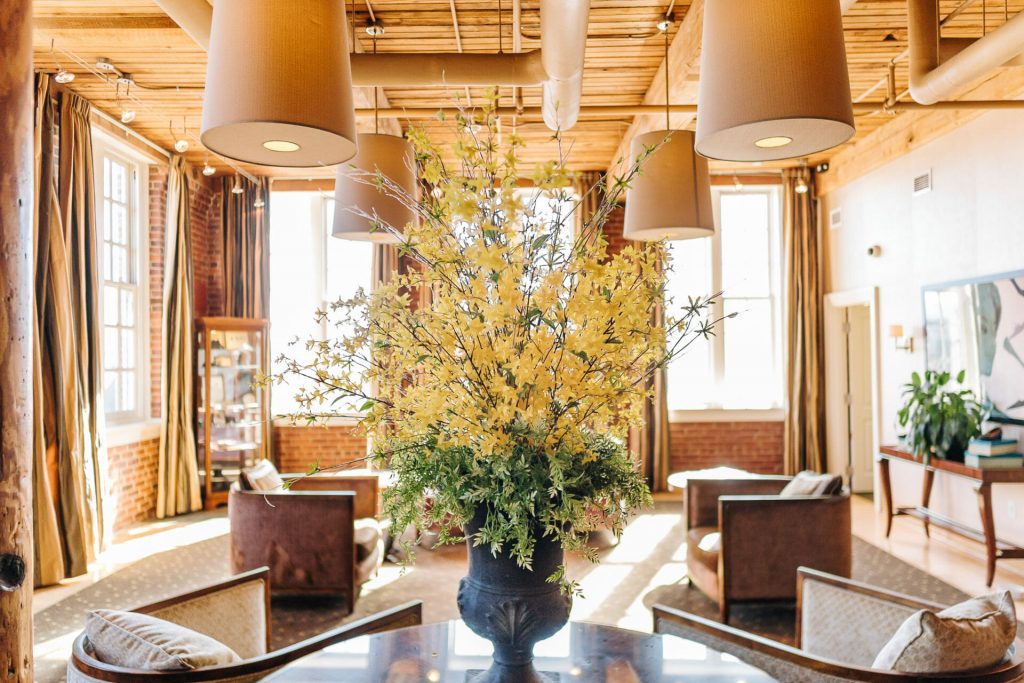
The Craddock Terry Hotel Lobby.
Craddock Terry Hotel: Craddock Shoe Company, once one of the largest shoe manufacturers in the world, used to turn out 100,000 pairs of shoes per day. Although there are no longer assembly lines filled with combat boots, high heels and loafers, the legacy of the 1888 shoe company lives on thanks to a meticulous historic renovation of the original factory.
Each of the 44 rooms in the boutique hotel features original architectural elements such as exposed brick, original wood beams and soaring ceilings. A big red shoe on the exterior wall serves as a landmark for the once-industrial building.
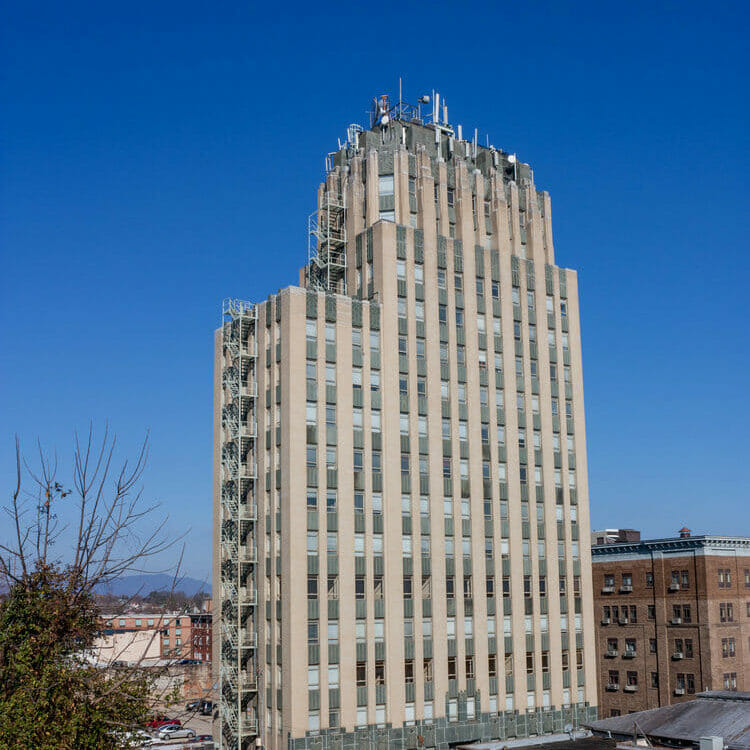
Allied Arts Building
Allied Arts Building: Located at 725 Church Street, the building was designed during the Great Depression. Architects Ray Brannan and Stanhope Johnson envisioned a building that towered 17 stories above LYH. The building, constructed between 1929 and 1931, was made of Lynchburg greenstone mined in the Fort Hill neighborhood ad features architectural details such as ornate metalwork on the bay windows.
The Allied Arts building earned the nickname “baby Empire State building” because the Art Deco style resembles the iconic New York landmark. It’s no longer the tallest building in Lynchburg but remains an important part of the city skyline.
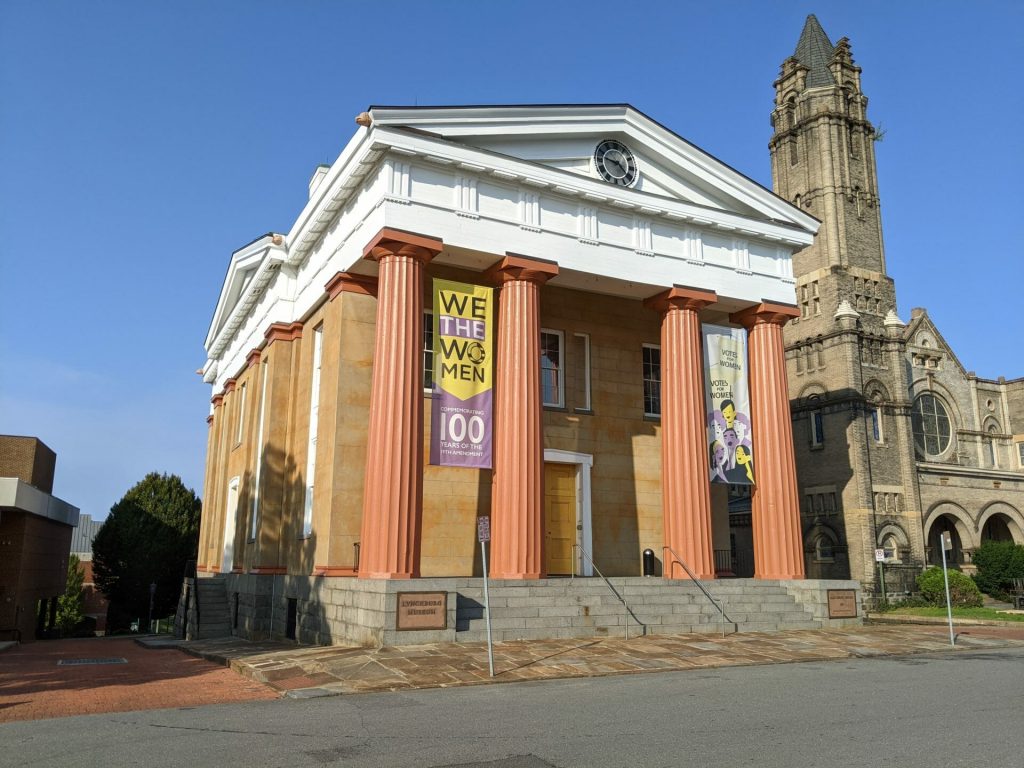
The Old Courthouse is now the Lynchburg Museum.
Old Lynchburg Courthouse: The Old Lynchburg Courthouse, now the Lynchburg Museum, is located at the top of Monument Terrace, offering sweeping views of downtown. In addition to its iconic location, the courthouse has its own place in LYH history.
William S. Ellison, an engineer with the Virginia and Tennessee Railroad, designed the courthouse. Using the Greek ruins as his inspiration, Ellison created paired columns, a Doric portico and dramatic dome complete with a belfry. Construction was completed in 1855.
In 1970, the historic courthouse was restored and transformed into the Lynchburg History Museum.
Want to learn more about LYH architecture? Take a self-guided walking tour of all of the important historic buildings in downtown Lynchburg.

Jodi Helmer writes about food, drink and travel for National Geographic Traveler, Hemispheres, Huffington Post, AARP and Our State. She lives and works on a hobby farm near Charlotte, North Carolina.
Learn more about Jodi HERE
